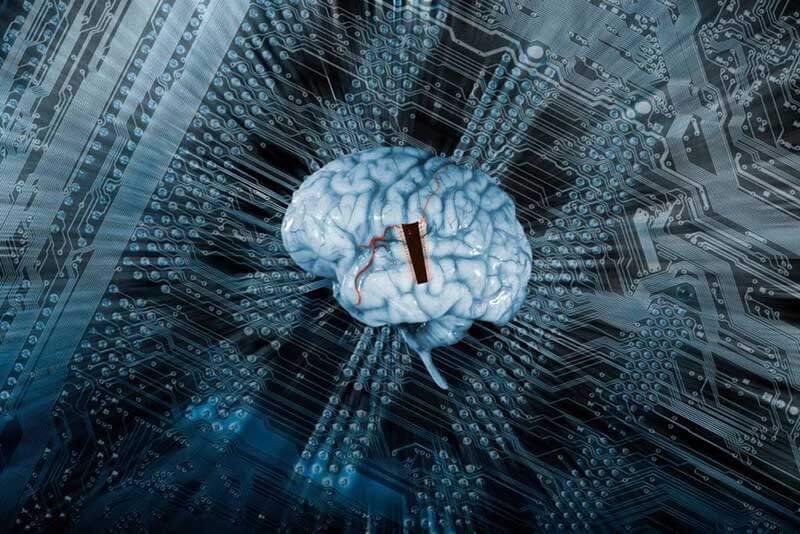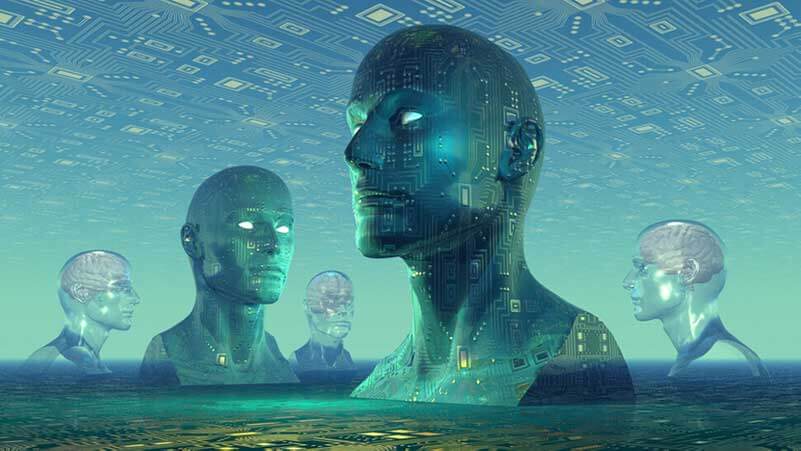Tech Startup Wants to Upload People Brains
- The U.s. startup Nectome wants to upload your heed to the cloud
- The 2045 Initiative promises to assist humanity reach immortality by 2045
- Current testify suggests that mind uploading is theoretically possible
- The practical and upstanding issues of mind uploading
Achieving immortality has long been humanity'south holy grail. Ever since we kickoff became enlightened of the fragility of our own existence, we've been looking for ways to cheat decease and prolong our lives indefinitely. Although advancements in medicine have enabled us to significantly increase our lifespan, true immortality has remained out of reach. Achieving concrete immortality may very well evidence to be beyond our capabilities, but what about digital immortality?
The United states of america startup Nectome wants to upload your listen to the cloud
A United states startup called Nectome recently unveiled plans to help humanity achieve digital immortality by preserving the brain – using a revolutionary new embalming technique – and after uploading information technology to the cloud. The procedure is called vitrifixation, or Aldehyde-Stabilised Cryopreservation. Information technology involves replacing the blood flow in the brain with embalming chemicals that preserve its neuronal structure in microscopic detail, basically by turning it into 'frozen drinking glass'. "You can retrieve of what nosotros practice every bit a fancy course of embalming that preserves non but the outer details simply the inner details," explains Robert McIntyre, a co-founder of Nectome.

There are a couple of caveats, though. The biggest 1 is that you can't actually survive the procedure. Furthermore, in order for information technology to piece of work, it needs to be performed on a living brain. If the brain has been dead even for a brusk amount of time, it will become irreparably damaged and the procedure won't be successful. That means that it would essentially be a grade of suicide, which would arrive legal only in those U.s. states that allow euthanasia, such equally California. Another major downside is that Nectome withal isn't even close to developing a method for reviving or uploading the preserved brain to the cloud.
However, this uncertainty didn't stop people from investing in the idea, with 25 people already having joined the waiting list past paying a $ten,000, fully-refundable deposit. One of those people is Sam Altman, the chief executive of the successful startup accelerator Y Combinator, which recently welcomed Nectome into its fold. The company managed to raise more than $1 million in funding so far and was awarded two prizes past the Brain Preservation Foundation, as well as a big government grant to interact with MIT. However, the widespread public criticism that followed the waiting listing announcement resulted in MIT cutting all ties with Nectome.
The 2045 Initiative promises to help humanity achieve immortality by 2045
Nectome isn't the merely visitor working on uploading our minds to a figurer. In 2011, the Russian businessman and billionaire Dmitry Itskov founded the 2045 Initiative, an arrangement that aims to help humanity achieve immortality by 2045. "Inside the adjacent xxx years, I am going to make certain that we can all live forever," claims Itskov. "The ultimate goal of my plan is to transfer someone'southward personality into a completely new body".
The 2045 Initiative has laid out its programme in iii stages. The get-go stage involves edifice a humanoid robot chosen the Avatar, and a cutting-edge brain-estimator interface system. The 2d phase consists of building a life support system for the human brain, and linking it with the Avatar. The third and concluding phase involves creating an artificial brain that would agree the original individual consciousness.
Current bear witness suggests that mind uploading is theoretically possible
And then, can it actually be done? Is it actually possible to upload a heed to a computer? The short answer is: yes, theoretically. "All of the evidence seems to say in theory it's possible – it'south extremely hard, but information technology'southward possible," says neuroscientist Randal Koene, the scientific managing director of the 2045 Initiative. The human brain is an incredibly complex organ, consisting of almost 86 billion neurons that constantly exchange data with one another. All of the connections between the neurons in a brain are called the connectome, and many scientists believe that this connectome actually holds the information that makes us who nosotros are. And mapping it could potentially allow united states of america to recreate a person's listen.
Our current assumption is that all encephalon action is computable. If that'due south true and the brain does work like a computer, and if nosotros could find a manner to map that action, scan the encephalon at the necessary level of detail, interpret the scan in a style that would allow united states to reconstruct the brain'south neural network and create a faithful simulation, and if we had enough computing power to run such a simulation, and then nosotros should exist able to recreate the human mind in a computer. That'southward a lot of ifs, merely until we know different, it remains in the realm of possibility. Nonetheless, it's a very remote possibility at this point. "We are pitifully far abroad from mapping a human connectome," says Dr Ken Hayworth, a neuroscientist at the Janelia Research Campus in Virginia. "To put it in perspective, to image a whole wing encephalon it is going to take united states of america approximately one to two years. The thought of mapping a whole man brain with the existing engineering science that nosotros accept today is merely incommunicable."
The practical and ethical issues of mind uploading
The main problem is that in that location are and so many things about the human brain we don't know yet. We don't know how the mind is created. Nosotros don't know what consciousness is or how to measure it, then fifty-fifty if we were able to create a simulation of the man encephalon, we wouldn't be able to determine whether that simulation really is conscious. We don't fifty-fifty know exactly which encephalon structures and biomolecules need to be preserved to recreate a person's memory or personality, or if it's even possible.
Many scientists are certain it can't be washed. "You cannot code intuition; you cannot code aesthetic beauty; yous cannot code dear or hate," argues Dr Miguel Nicolelis, a neuroscientist at Duke University. "There is no fashion you will ever come across a homo brain reduced to a digital medium. It's but impossible to reduce that complexity to the kind of algorithmic process that you will have to have to do that."

The whole idea is also rife with ethical issues, and some experts are suggesting that 'Can we do it?' isn't fifty-fifty the correct question to enquire. Instead, what we should be asking is 'Should we do information technology?'. Permit'southward say that nosotros've successfully uploaded a human mind onto a computer. Does that mean that personal identity has too transferred along with memories and that this person is nonetheless the same? Or is it a new person with a different identity that simply happens to share the same memories? What rights would this digital person have? And if you lot could create one copy of yourself, why wouldn't you be able to create multiple copies? In that case, which one of those copies would be the 'existent' y'all? And since you wouldn't have a physical body anymore and would substantially be reduced to a stream of information, who would that data belong to? Who would own you? How could you prevent major corporations from misusing your data?
Listen uploading is a fascinating concept, merely we're non sure yet whether it's fifty-fifty possible. Our existing technology and our agreement of the human being brain aren't avant-garde enough to answer that question at this time. Even if uploading the human mind onto a computer eventually turns out to be impossible, the thought is still worth pursuing further, because the technology Nectome and others are working on could have many other useful applications. For case, it could facilitate brain cyberbanking for future research into health and disease states, help united states discover new encephalon disorder drugs, or raise our bones neuroscience circuit mapping.
Source: https://blog.richardvanhooijdonk.com/en/in-a-future-of-mind-uploading-will-you-still-be-you-and-who-will-own-your-mind/
Post a Comment for "Tech Startup Wants to Upload People Brains"